What We’re Loving — Fall Break 2015
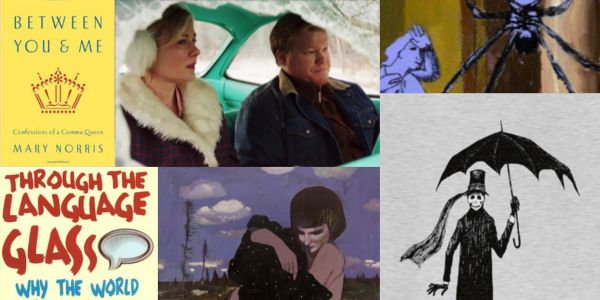
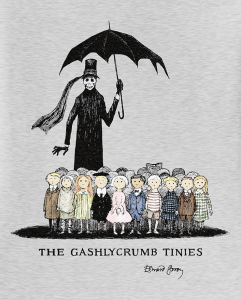
Few are more appropriately named than Edward Gorey, the children’s author whose warped mind and pen briefly rocked my formative years. I mean, from no one else have I ever encountered the idea of being run through with an awl. In a Halloween mood, I checked out a few of his books, and, yes, they were just as unexpected and creepy-engrossing as ever. Gorey’s body of work is diverse, shuttling from eerie to surreal to absurd, but there are some constants: the minutely- and manically-inked drawings, for one, and his melding of ominous drama and child’s nonsense. It’s my experience that a Gorey character must always be weeping, whispering to paramours, falling into a faint, perishing, or casting aspersions on the soup. Black cats and parlor furniture are frequent. Vague foreboding reigns supreme.
Perhaps the most famous of his books is The Gashlycrumb Tinies, which is a kind of alphabet primer for the depraved, a Seuss book gone sour. I think it’s my favorite. Its cover shows a band of children in frocks and breeches, conspicuously puny, Death with his umbrella looming overhead. And inside the book — well. Wikipedia reports that Gorey didn’t associate with and had no particular fondness for children, which can be no surprise to those of us who’ve read the book and know just what happens to Amy, Basil, Clara and all the rest. This style of writing isn’t for everyone, of course. One time I brought The Gashlycrumb Tinies into school and showed it to a friend of mine and she almost vomited. But if a grim humor ever overtakes you, if you settle in for the night and find your mood is macabre, a bit of Gorey may charm you just as much as it does me.
— Terry O’Shea
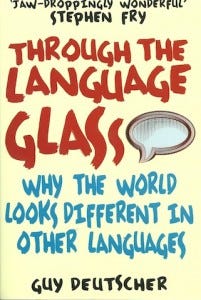
It’s nonfiction. It’s linguistics. The graphs resemble some nightmarish collision of scientific data sets and my preschool crayon collection. The author’s first language isn’t even English. Also, it’s great. Through the Language Glass: Why the World Looks Different in Other Languages is a masterpiece of the playfully intellectual. It’s about the search for a relationship between how we talk about the world and how we think about the world. Guy Deutscher recounts the scholarly shipwrecks of previous researchers who explored this question and then sets out on his own chase after the Sirens of neurolingualism, piloting us through studies that may not exactly ring of forbidden sea-maiden song but definitely echo of thought-impacting speech. Speaking of Homeric efforts, Through the Language Glass is the most cleverly crafted work of nonfiction that I’ve met in a while. The style is anecdotal, the wordplay is brilliant, and the tidbits of information are better than your favorite Snapple cap. If you’re a classicist, a neuroscientist, an anthropologist, a historian, a user of language, or a kangaroo, this one’s for you.
— Ayelet Wenger
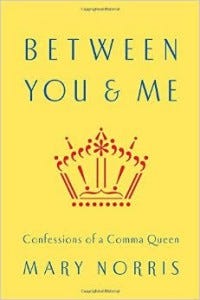
Being the only person under retirement age at a book reading might generally be a red flag, but not when the book in question is Mary Norris’ half-memoir, half-style manual Between You & Me: Confessions of a Comma Queen. A former dairy industry enthusiast turned copy-editor for The New Yorker, Norris came to Princeton last week to speak at Labyrinth Bookstore about the finer things in life: comma sense, the politics of hyphens, profanity, and pencil museums (obviously). While Between You & Me is a celebration of Norris’ keen handle on the complexities of the English sentence, her intention isn’t to force anyone into a “linguistic straitjacket”: the book is, at its core, a meditation on several unresolved problems in language that even the prose goddesses and grammarians of the world can’t fix with mere punctuation prescriptions. A case in point is the pronoun war: how will English adapt to the heated climate of gender politics without a common-sex singular personal pronoun to its name? Even with big questions like these looming ahead like a dangling modifier, Norris stays true to the first principle of her craft: language is decorative. Between You & Me wears it well.
— Nicolette D’Angelo
While scanning the internet’s many aggressively hipster corners as part of my daily sickness, I recently stumbled upon the paintings of Alexandra Levasseur, at which point my body felt lighter, and my mind felt healthier, as if some cotton candy demigod had reached a sinewy hand through the screen performed an old-style miracle, right then and there. What I mean to say is that Levasseur’s paintings are a gem in the very overcrowded mine of artwork one can find on the internet. They play with many of the familiar themes (the female body, nature, and that certain existential crisis-ey consciousness) that are so common in the art posted on style blogs or on Tumblr. What sets them apart is, for one, their comfort with their own imperfection. Unlike the black and white minimalism today’s art often complies to, Levasseur’s works combine hectic color schemes and patterns, and utilize globs of paint and scribbled lines to create a composition that, while rather flat, is similarly textured and multitudinous. Perhaps it is this multitude, or the feeling that there is something behind the paint, that makes Levasseur’s secret universe so captivating.
Her most recent works remind me of Phillip Pullman’s Subtle Knife and that novel’s blade, which can slice through the air into another universe. In the painting “censure cosmique”, a black, starry hole appears in the foreground of a forest, and a pink women wraps her arms through it, like it was water. Levasseur’s paintbrush is a feminist that doesn’t brag about it, and her oils are fragrant, painful, and lyric. Her strokes are monsters I’d go out to lunch with.
— Remi Shaull-Thompson
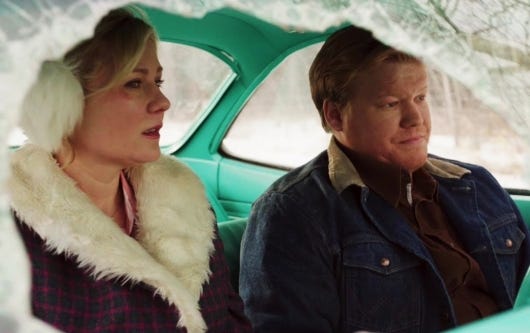
Fargo, “a homespun murder story,” turns 20 next year. Two years ago, when it was announced that the film would be turned into an FX miniseries, it seemed that it was just another example of studio honchos trying to squeeze some more cash out of a wholesome tale of revenge and homicide. The series, starring Martin Freeman and Billy Bob Thornton, went on to win Emmys and other accolades, but it also did more than that: it redefined the expectations for big-to-small screen endeavors by keeping intact the quality and character of the original while adding its own vision. In other words, it was the perfect homage and the perfect new series. Still, I had my doubts about a second season, confirmed over the summer, which features an entirely new cast. This Monday, my doubts were completely erased. Bolstered by the typically humdrum — waffles, snowballs, Ronald Reagan, butcher shops, brotherly squabbles — Fargo season two’s more sinister elements are biting and witty, picking up where the last season left off and reinvigorating any tired troupes that Freeman & co were unable to capitalize on. There are big names — Ted Danson, Kirsten Dunst — and there little(r) names — Jesse Plemons, Patrick Wilson — but they all combine under the hawk-eye of creator Noah Hawley for another helping of the deliciously sardonic enterprise of punch-drunk criminals and love-struck Midwesterners. If you’re lookingfor something new to fill a Walter White or Hannibal Lector shaped hole in your heart (or even just your TV schedule), remember: ’tis the season.
— Paul Schorin
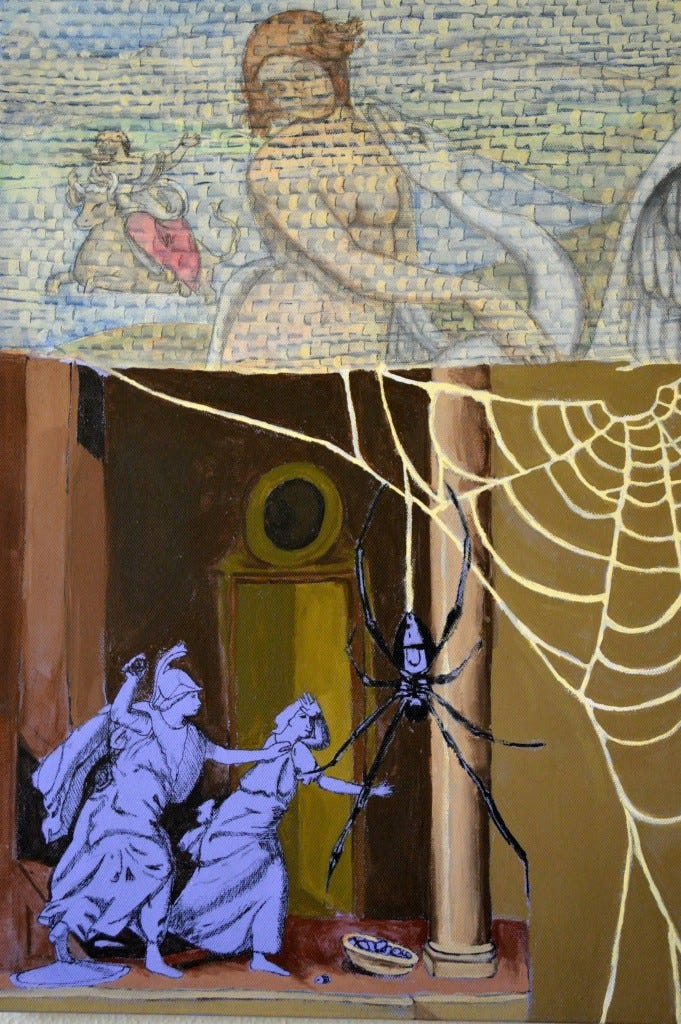
Salvete Omnes! Recently, I’ve been trying to prioritize and balance my academics with my extracurriculars. My extracurriculars are mainly centered around the subject of art. I’m involved with three publications as a cartoonist and artist. LEAP, my fourth extracurricular, teaches children about art and gives them an opportunity to be creative, since their schools don’t or rarely offer a lessons on art. Additionally, half of my classes are studying different aspects of art: “Drawings Up-Close” and “What is Art?”
Art has always been a part of my life. As a child, I experimented with various mediums in my elementary classroom and at home (once, even, on the one ceiling I could reach using permanent marker ). When I entered middle school, however, I never took an actual art class. I’ve always worked on my art skills in addition to my academic schedule. Now that I’m in college, I would really like to learn art in a classroom setting, collaborating and learning from my peers.
But why do I make art? What’s so great about art? From personal experience and from reading assignments, art is way to express feelings, thoughts and concepts. And, art is also for just creating beauty — something aesthetically pleasing either to the eyes or the heart. I like to use art in both ways. It’s satisfying to create something that everyone can agree is “aesthetically” beautiful. It is also gratifying to observe the different ways an audience can react to art that’s more about the deeper meaning than what’s at face-value. I personally make art to relieve stress, to communicate stories, to provoke thoughts and to give to my friends as gifts.
— Tashi Treadway